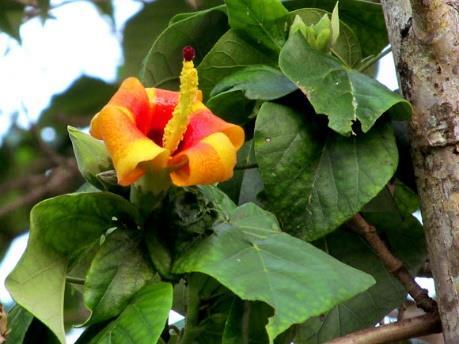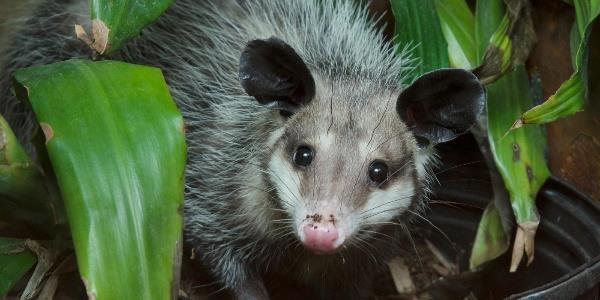
3 minute read
BIOTIC
BIOTIC COMPONENTS
The biotic factors are those which
Advertisement
are living.
As previously mentioned, the distinct layers of the trees in all tropical rainforests dominate its landscape, creating an umbrella or canopy over the forest floor. Emergent trees stand above the canopy, and take the brunt of the strong winds, sunlight and high temperatures protecting the lower levels of flora and overall the fauna. The conditions of the canopy were very different from those of the forest floor. On a sunny day, the canopy is drier and hotter than other parts of the forest due to the hot air rising in the water cycle. The gaps between the trees allow our winged friends to fly, glide or jump in order to move about in the treetops. Beneath these gaps we can find the understory. This is where small trees and shrubs are found. Some grow to reach the canopy while others stay closer to the forest floor. The dark and humid state of the forest floor on the other hand, is due to the shade provided by the canopy. This, however, does not lessen the importance of the forest floor. It is home to the micro-organisms that will aid in the decomposition of plants and animals that aids in recycling essential materials and nutrients.
The valley is home to a cornucopia of endemic species of plants and animals. The rainforest is vast with many canopy trees and buttresses which hold together the shallow mountain soil especially during powerful storms.
The rainforest has Buttress trees (Syncarpia hillii) that is the tallest plant within the rainforest and usually part of the emergent that covers the forests (Figure 5.1).
Figure 5.1Showing the Buttress tree (Syncarpia hillii)

Figure 5.2 Showing the Gommier tree (Dacryodes excelsa) Another one of the trees which are found here is the Gommier tree (Dacryodes excelsa) which both house and feed birds which are found in the forests. (Figure 5.2). The blue Mahoe (Talipariti elatum), also known as the hibiscus tree, is a food source for the vulnerable species the St. Vincent Parrot. The bird feeds on the red and yellow flowers that bloom on the trees (Figure 5.4)
Figure 5.3 Showing the Blue Mahoe (Talipariti elatum)

BIOTIC COMPONENTS
Figure 5.5 Showing from left to right, the St Vincent parrot, Whistling Warbler, House Wren and the Purple Throat Crab

The rainforest that surrounds the
Vermont Nature Trail are well known for their vulnerable St Vincent parrot (Amazona Guildingii), the national bird of St.Vincent, whose songs can be heard along the trails as they nest in tall buttresses and feed on flowers of the Blue Mahoe. The forest is the home to two endangered species of birds: the Whistling Warbler(Cathropeza bishop) and the House Wren (Troglodytes aedon musica) as shown in Figure.5.5.
The country of Dominica is filled with endemic species of plants and animals, such as the endangered Imperial Amazon Parrot (Amazona imperialis) (Figure 5.6)

which is the national bird of the country. The bird feeds on seeds, fruits, berries and blossoms.
The other endemic bird of Dominica is the endangered Red necked parrot (Amazona arausiaca) (Figure 5.7) which eats flowers and sprouts of plants. Other endemic species include the Dominican ground lizard (Ameiva fuscata) and a species of tree frog (Eleutherodactylus amplinympha). The rainforest is also the home to many rare animals that can only be found in certain Caribbean countries such as Black-eared opossum (Didelphis marsupialis), blue headed hummingbird (Cyanophaia bicolor) and the black capped petrel.
The volcano has five main vegetation zones due to the elevation with the lower three zones being rainforest, Monte rainforest, Mature Rainforest and Secondary Rainforest. The elevation of the rainforest allows for vast diversity of endemic plants to grow on the volcano due to it’s nutrient rich soil composition.

Figure 5.7Showing the Red necked Parrot (Amazona arausiaca)
BIOTIC COMPONENTS

Figure 5.9 Showing the Dominican ground lizard (Ameiva fuscata)
Figure 5.10Showing the tree frog (Eleutherodactylus amplinympha)

Figure 5.11 Showing the Black haired Oppossum


(Didelphis marsupialis) Figure 5.12Showing the Blue headed Hummingbird (Cyanophaia bicolor)








